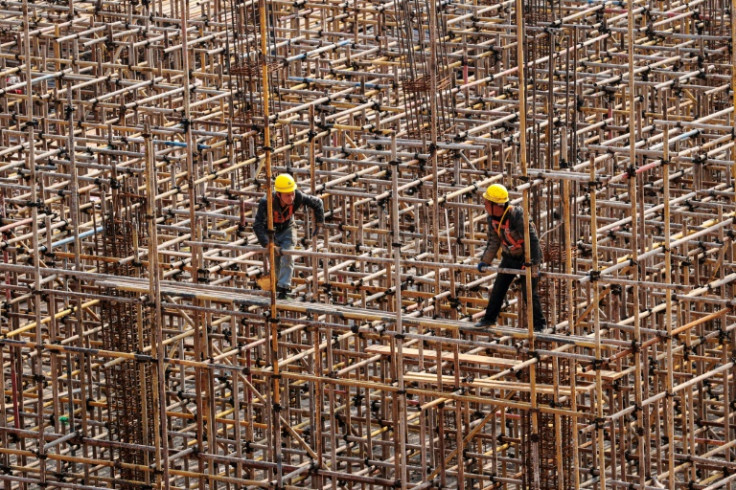
China's central bank on Tuesday cut a key benchmark lending rate used to price mortgages, as Beijing seeks to boost its flagging growth.
Officials in China have struggled to kickstart economic growth as they battle a range of headwinds, including a prolonged property-sector crisis, soaring youth unemployment and a global slowdown that has hammered demand for Chinese goods.
The five-year loan prime rate (LPR) was lowered from 4.2 to 3.95, the People's Bank of China announced -- its first cut since June.
It is the largest cut to the rate since it was introduced in 2019, according to Bloomberg, and lower than that expected by economists polled by the financial news wire.
The one-year LPR, which serves as a benchmark for corporate loans, remained unchanged at 3.45 percent. The one-year rate was last lowered in August, while the five-year LPR had previously been reduced in June.
Tuesday's moves are aimed at encouraging commercial banks to grant more credit and at more advantageous rates.
They come in stark contrast to most other major economies, where rates have been raised in a bid to curb inflation -- part of a global slowdown that is hitting demand for China's exports, long a key driver of growth.
The decision follows a series of mixed indicators for the world's second-largest economy.
China last year recorded one of its worst annual growth rates since 1990, dampening hopes for a rapid economic recovery following the end of draconian Covid restrictions in late 2022.
Activity is also being hit hard by an unprecedented crisis in real estate, a key engine of Chinese growth that has long represented more than a quarter of the country's GDP.
In January, consumer prices fell at their quickest rate in more than 14 years, piling pressure on the government to make more aggressive moves to revive the battered economy.
Deflation can be a brake on the profitability of companies and harms employment and demand in the long term.
Last month, Beijing announced it would cut the amount banks must hold in reserve, known as the reserve requirement ratio.
Policymakers have in recent months announced a series of targeted measures as well as the issuance of billions of dollars in sovereign bonds, aimed at boosting infrastructure spending and spurring consumption.
But that, and recent announcements including central bank interest rate cuts and measures to boost lending, have had little impact so far.
Analysts say a "bazooka" stimulus plan is needed to restore confidence.
There were some bright spots, however. Official data showed Sunday that consumption rebounded during the recent Chinese New Year holidays, exceeding even pre-pandemic levels.
But analysts cautioned that the slightly longer-than-usual holiday period this year meant a comparison would likely be distorted.







